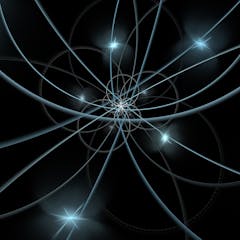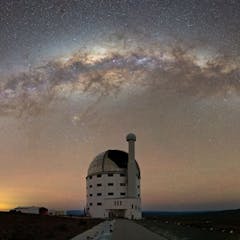
Articles on Physics
Displaying 1 - 20 of 455 articles

Tau neutrinos are notoriously difficult to spot in detectors like IceCube. But researchers have managed to isolate 7 candidates.

The US, Europe and China are all planning particle colliders that would study the Higgs boson.

Maritime folklore is awash with tall tales of monstrous waves. A new study gets closer to understanding where they come from and how to predict them.

During a walk in the Scottish Highlands, one of the greats of particle physics had the idea of a lifetime

A civil engineer lays out the physics behind Dali’s crash into the Francis Scott Key Bridge pier.

Textbooks often show Earth’s orbit around the Sun as an almost egg-shaped ellipse. The real story is very different.

Quantum computing has huge promise from a technical perspective, but the practical benefits are less clear.

How can the same material, ice, have diametrically different physical properties - sticking and sliding?

People have been flying airplanes for well over a century. Engineers know how to balance all the forces at play, but still aren’t exactly sure how some of the physics of flight actually works.

A new measurement of gravity at small scales hints at an alternative to billion-dollar experiments for the future of physics.

The people manning the guns are also at risk of injury from the force of the weapon.

Robots often have a hard time navigating through debris, but robots designed based on worms and snakes could move around obstacles faster, thanks to an idea called mechanical intelligence.

When you’re running late in the winter, you don’t want to have to spend time scraping frost off your windshield. Try some expert-recommended techniques instead.

Microplastic pollution is a growing problem − one lab is looking at tiny insects as inspiration for how these pollutants might move through water.

Operating the DragonFire laser system for ten seconds costs the equivalent of using a heater for an hour (less than £10 per shot).

Human behaviour is often irrational if viewed through the lens of “classical” physics and probability theory.

Using fingerprints to catch criminals isn’t 100% accurate, but analyzing fingerprints in 3D, rather than 2D, could improve the process.

The astronomical community has thrived and world-class astronomical facilities have been established in South Africa.

A deadly avalanche at Palisades Tahoe, home of the 1960 Winter Olympics, shows the risk as snow layers melt and new snow falls.

The bottoms of boats and docks can accumulate lots of dirt, but semiaquatic animals like otters avoid having ‘fouled’ fur. Their secret could one day help keep underwater infrastructure clean.
